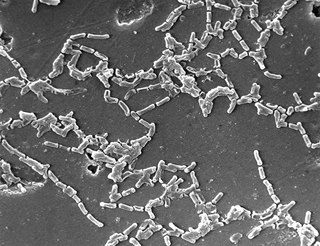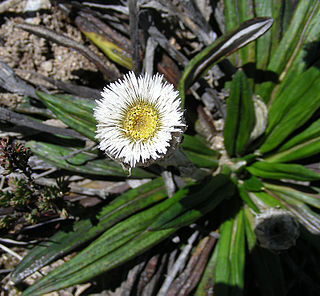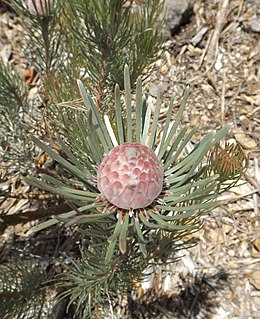
Mackerel is a common name applied to a number of different species of pelagic fish, mostly from the family Scombridae. They are found in both temperate and tropical seas, mostly living along the coast or offshore in the oceanic environment.

The conservation status of a group of organisms indicates whether the group still exists and how likely the group is to become extinct in the near future. Many factors are taken into account when assessing conservation status: not simply the number of individuals remaining, but the overall increase or decrease in the population over time, breeding success rates, and known threats. Various systems of conservation status exist and are in use at international, multi-country, national and local levels as well as for consumer use.

A genet is a member of the genus Genetta, which consists of 17 species of small African carnivorans. The common genet is the only genet present in Europe and occurs in the Iberian Peninsula, Italy and France.
Squalus grahami, the eastern longnose spurdog, is a dogfish of the family Squalidae, found off northern Queensland, at depths between 220 and 500 m. Its length is up to 64 cm. Its reproduction is ovoviviparous.

Notiosorex cockrumi, also called Cockrum's gray shrew or Cockrum's desert shrew, is a tiny species of shrews named in 2003. This red-toothed shrew, which is as light as a penny, is the first new mammal species from Arizona since 1977. Its range extends from Arizona to central Sonora, Mexico.

Mycobacterium chelonae is a species of the phylum Actinomycetota, belonging to the genus Mycobacterium. Mycobacterium chelonae is a rapidly growing mycobacterium that is found all throughout the environment, including sewage and tap water. It can occasionally cause opportunistic infections of humans.

A species that is extinct in the wild (EW) is one that has been categorized by the International Union for Conservation of Nature as known only by living members kept in captivity or as a naturalized population outside its historic range due to massive habitat loss.
Floscaldasia azorelloides is a species of flowering plant in the family Asteraceae. It is found only in Ecuador. Its natural habitat is high-altitude grassland. It is threatened by habitat loss.
Floscaldasia is a genus of South American flowering plants in the family Asteraceae.

Oritrophium is a genus of Mesoamerican and South American flowering plant in the tribe Astereae within the family Asteraceae.
Oritrophium ollgaardii is a species of flowering plant in the family Asteraceae. It is found only in Ecuador. Its natural habitat is subtropical or tropical high-altitude grassland. It is threatened by habitat loss.
Oritrophium tergoalbum is a species of flowering plant in the family Asteraceae. It is found only in Ecuador. Its natural habitat is subtropical or tropical high-altitude grassland. It is threatened by habitat loss.

The Lake Pedder earthworm is an extinct earthworm species in the family Megascolecidae. Its genus Hypolimnus is monotypic.
The pink velvet worm is a species of velvet worm in the Peripatopsidae family. It is known only from Weza Forest, a Mistbelt Forest in South Africa. Opisthopatus roseus has been found on the forest floor amongst leaf litter, beneath, and within fallen logs.

The Viverrinae represent the largest subfamily within the Viverridae comprising five genera, which are subdivided into 22 species native to Africa and Southeast Asia. This subfamily was denominated and first described by John Edward Gray in 1864.

Bourlon's genet is a genet species native to the Upper Guinean forests. It is known from only 29 zoological specimens in natural history museum and has been described as a new Genetta species in 2003. It is listed as Vulnerable on the IUCN Red List as the global population is estimated at less than 10,000 mature individuals.

The red serow is a goat-antelope thought to be native to southern Bangladesh and northern Myanmar. It has been sometimes been considered a subspecies of C. sumatraensis. In the northeastern part of India, the red serow occurs widely in the hills south of the Brahmaputra river. although the IUCN states that this species is recorded with certainty only from Myanmar, in Kachin State, and that records in India refer to the Himalayan serow.

Leucadendron album is a species of flowering plant in the family Proteaceae that grows in South Africa.











